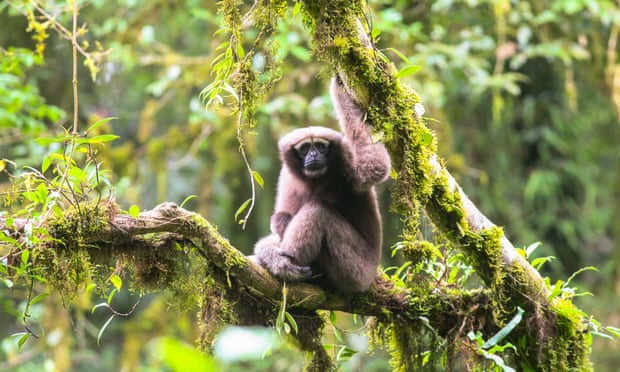Post by Ceratodromeus on Jan 13, 2017 22:59:24 GMT 5

Scientific classification
Kingdom: Animalia
Phylum: Chordata
Subphylum: Vertebrata
Class: Mammalia
Order: Primates
Family: Hylobatidae
Genus: Hoolock
Species: H.tianxing
Description
The holotype of this species was collected by Roy Chapman Andrews in 1917 and was the skin of an adult male, collected from Ho-Mu-Shu pass of Yunnan. The species was discovered after analysis of museum specimens(skins and skulls) in various zoological collections. Determination of H.tianxing as a separate species from other members of the Hoolock genus were determined via molecular DNA analysis and coloration of the coat{1}.
Reference
{1}Fan, Peng‐Fei, et al. "Description of a new species of Hoolock gibbon (Primates: Hylobatidae) based on integrative taxonomy." American Journal of Primatology (2017).
New species of gibbon discovered in China

"Scientists have discovered a new species of gibbon living in south-west China’s rainforests.
Although scientists had been studying the primate for some time, new research has revealed it is in fact a different species.
It has been named the Skywalker hoolock gibbon by its discoverers, who are Star Wars fans. The name is also a nod to the fact that the Chinese characters of its scientific name, Hoolock tianxing, mean “Heaven’s movement”.
Dr Sam Turvey, from the Zoological Society of London, who was part of the team studying the apes, told BBC News: “In this area, so many species have declined or gone extinct because of habitat loss, hunting and general human overpopulation.
“So it’s an absolute privilege to see something as special and as rare as a gibbon in a canopy in a Chinese rainforest, and especially when it turns out that the gibbons are actually a new species previously unrecognised by science.”
Primates in pictures: US photographer's stunning portraits of endangered species
View gallery
The research team, led by Fan Peng-Fei from Sun Yat-sen University in China, first suspected that the gibbons they were studying in Gaoligongshan nature reserve in Yunnan province might be different because of subtle differences in the typical facial markings of white eyebrows and beards.
Gibbons are renowned for their loud song, which they use to mark territory, and this also sounded unusual.
A full genetic and physical comparison with other gibbons then confirmed that they had found a new species.
The scientists estimate that about 200 Skywalker gibbons are living in China and also potentially in neighbouring Myanmar, but say that the species should already be classified as endangered. Habitat loss and fragmentation is putting the gibbons at risk of extinction.
In the Gaoligongshan nature reserve where the gibbons were discovered scientists had to trek up to 2,500m to find suitable habitat as “everywhere below there has been logged”, Dr Turvey said to the BBC."
www.theguardian.com/environment/2017/jan/11/new-species-of-gibbon-discovered-in-china


